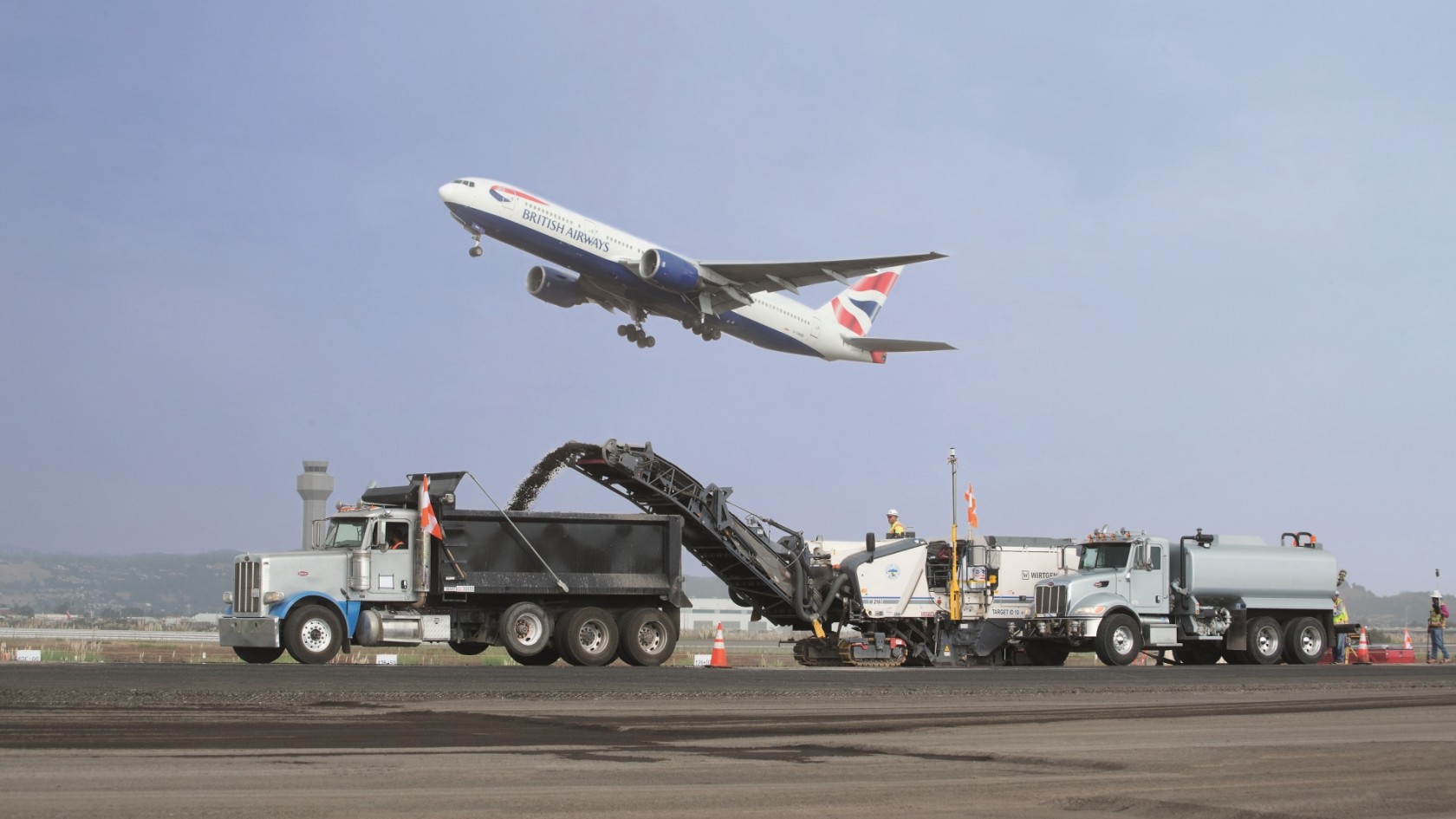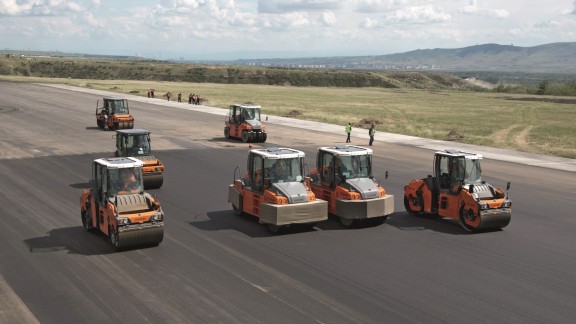

How do you renovate or expand an existing airport?
An airport redevelopment project always begins with milling. Depending on how severely damaged the pavement is, cold milling machines remove only a few millimetres of the asphalt or concrete surface to improve its grip.
If asphalt surfaces are more severely damaged, for example the surface layer or binder course, cold milling machines can mill the pavement up to 35 cm deep in a single pass. Pavers then pave and pre-compact the new asphalt, and rollers perform the final compaction.
Sometimes it may even be necessary to stabilise the base layer. In this case, soil stabilisers are used after milling. Mixing in lime or cement and compacting with rollers increases the soil’s bearing capacity, providing a stable foundation for asphalt paving and compaction.
Asphalt surfaces can be rehabilitated using different methods depending on how heavily the surface and/or sub-base is damaged. Concrete surfaces can be re-profiled with cold milling machines or alternatively removed with excavators and then newly paved. When expanding an existing airport, the construction of additional air operations areas must meet the requirements applicable to new airport construction.
WIRTGEN GROUP technologies have been used to build, extend, and rehabilitate many runways, taxiways, and aprons for stationary air traffic around the world – using technologies from BENNINGHOVEN, VÖGELE, and HAMM for asphalt and technologies from WIRTGEN for concrete.







